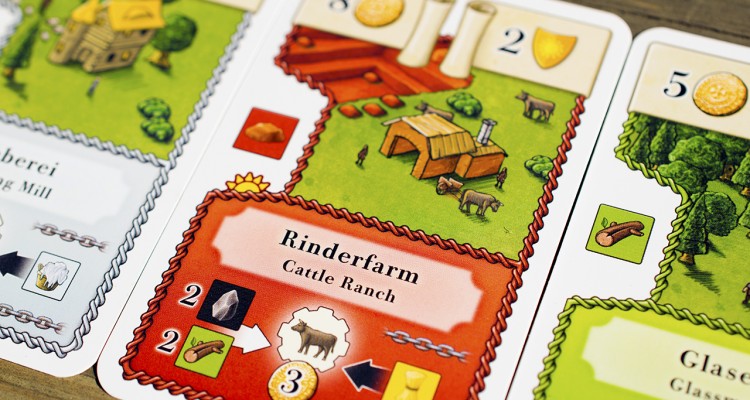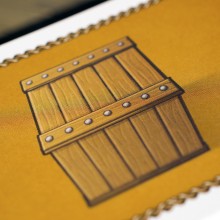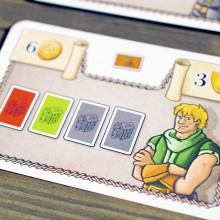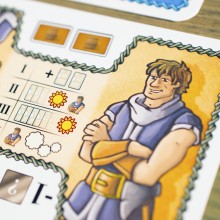Oh My Goods! is a deceitful little card game from designer Alexander Pfister and publisher Lookout Spiele. I describe it as such because while its small box will easily fade into the shelves of your FLGS, behind the unassuming Euro-style artwork and somewhat ridiculous title is a much deeper and more satisfying offering than is pitched by its aesthetic design and $15 price tag. Oh My Goods! is rich with hand management, engine-building, and just enough push-your-luck to keep your brain churning throughout its 30-40 minute play time.
Much like many larger Euro-style board games, the goal of Oh My Goods! is to construct an economic engine by appropriately managing the possibilities offered by a randomly selected market of resources and using them to power your production buildings. Doing so creates goods which can then be used to produce other goods or exchanged for their currency value and spent to add new buildings and assistants to your little empire.
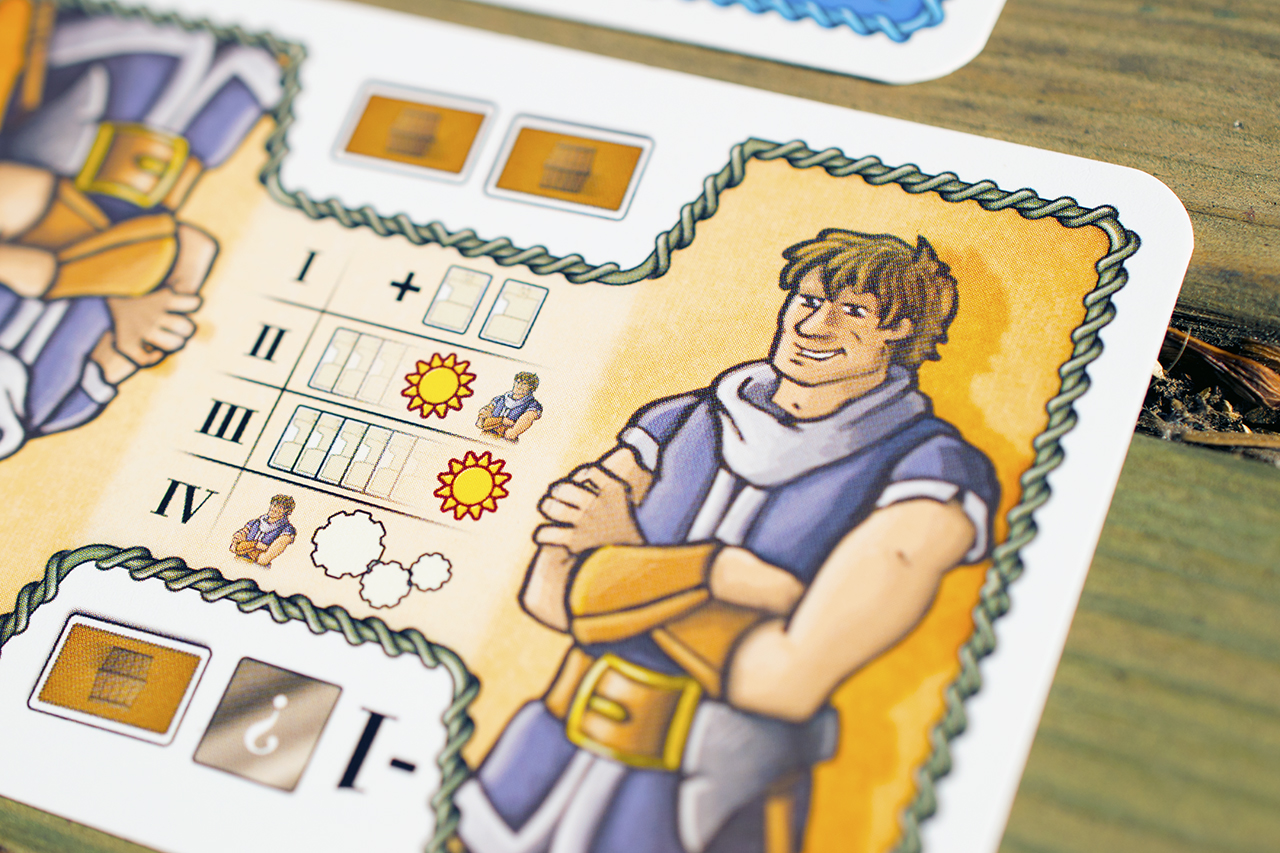
No Whammy, No Whammy…
Rounds in Oh My Goods! center around two market phases in which a number of resource cards will be revealed to a communal pool. How many cards in each phase is random, with the contents of the market being set once two cards with “sun symbols” have been revealed. This opening line of resources is the Morning Market and players will use its information to fuel their decisions on where to place their worker(s) and what building to build, if any. Each of your workers – one to start, but more can be bought – can work at a single building, producing either one or two of its goods. Production only occurs at a building if the market is host to the required resources in the appropriate quantities though, so it is your job to consider what is available to you. In addition to the contents of the Morning Market, a second influx of cards will be added in the Evening Market, but only after you’ve committed your workers to their posts. This injects an element of push-your-luck – the extra wool or clay you need may be coming in the next phase, but is it worth risking your worker’s only action this turn?
There are a few safety nets provided, working to mitigate the uncontrollable randomness of the market. You primary worker has the ability to work “orderly” or work “sloppily,” with the latter producing only one good instead of two, but requiring one less resource from the market. This can be a good option when the cards simply aren’t falling your way. Additionally, some buildings can provide additional resources, at the price of one of your few buildings slots. These Market Offices do not produce any goods of value, but constructing them can provide you with a bonus resource, an option that can prove fruitful when played in combination. Finally, and most importantly, the cards in your hand can be used to supplement the production cost of your buildings. This is a great option to fall back on and allows you to push your luck more often, knowing that you can always spend your cards if needed. It’s not the ideal choice though, as each turn you draw only two additional cards, so spending several to power one building can drain your hand quickly.
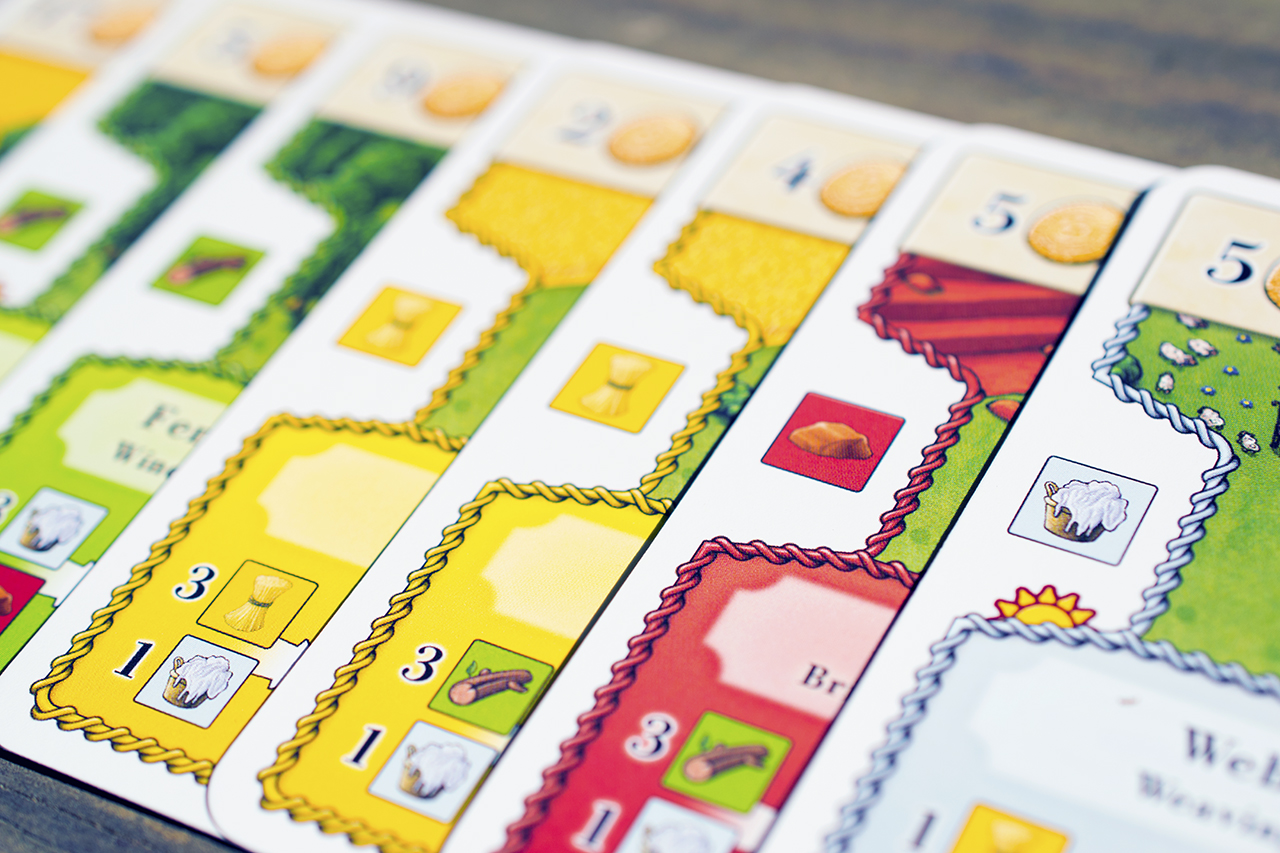
This hand management is especially relevant to the “chaining” action on each production building, which allows players to produce additional goods at a lower cost if the building has already been activated during the turn. Chaining can only be completed with cards from your hand, so spending multiple resources to jump start production eats away at your ability to easily produce those same goods. This is where working sloppily can be of huge benefit; rather than overexerting yourself, you can scrape by and get the assembly line going, then generate piles of those goods by chaining from hand.
The production of goods is only a means to an end though, as the goal of Oh My Goods! is not actually to amass a stockpile of goods, but rather to spend those goods on valuable buildings. Each card in hand is also a building with a cost and victory point value. Building eight buildings triggers the end-game, so real estate is slim. Each round you may build one building but must pay its cost with the goods that have been produced. This creates a delicate balance between resource generation, goods production, and building construction – a cycle you work diligently to maintain throughout.
Start Your Engines
The game works to disrupt this satisfying engine though. The market is fickle, often not providing you what you need when you need it. Sure, your hand of cards can help, but you’ll often have other plans for many of your cards and spending your safety net all in one place can hurt as you slowly draw two cards a turn to replenish. The card draw can also be frustrating; sometimes the deck simply doesn’t want to provide tidy combos. While your opponent uses wheat and wool to raise cattle, then converts that cattle to delicious meat for huge gains, you might be forging a production empire on linen clothing, clay pottery, and coal. Unfortunately there’s not a lot you can do in that matter because pacing is paramount. A player who rushes the end-game can force you into a tight spot. It’s often more important to build any building to keep pace, even if it doesn’t quite fit into your strategy.
There are definite pros and cons to consider in Oh My Goods! but that is largely because of what this small card game manages to accomplish. It provides an experience that is unexpectedly deep given its size. The multi-use cards have been designed well and the small introduction of the push-your-luck market works to increase the tension of the hand management. It can also be home to some excellent combo-building and a well executed turn gives you that feeling of efficiency and success that many Euro thrill-seekers chase.
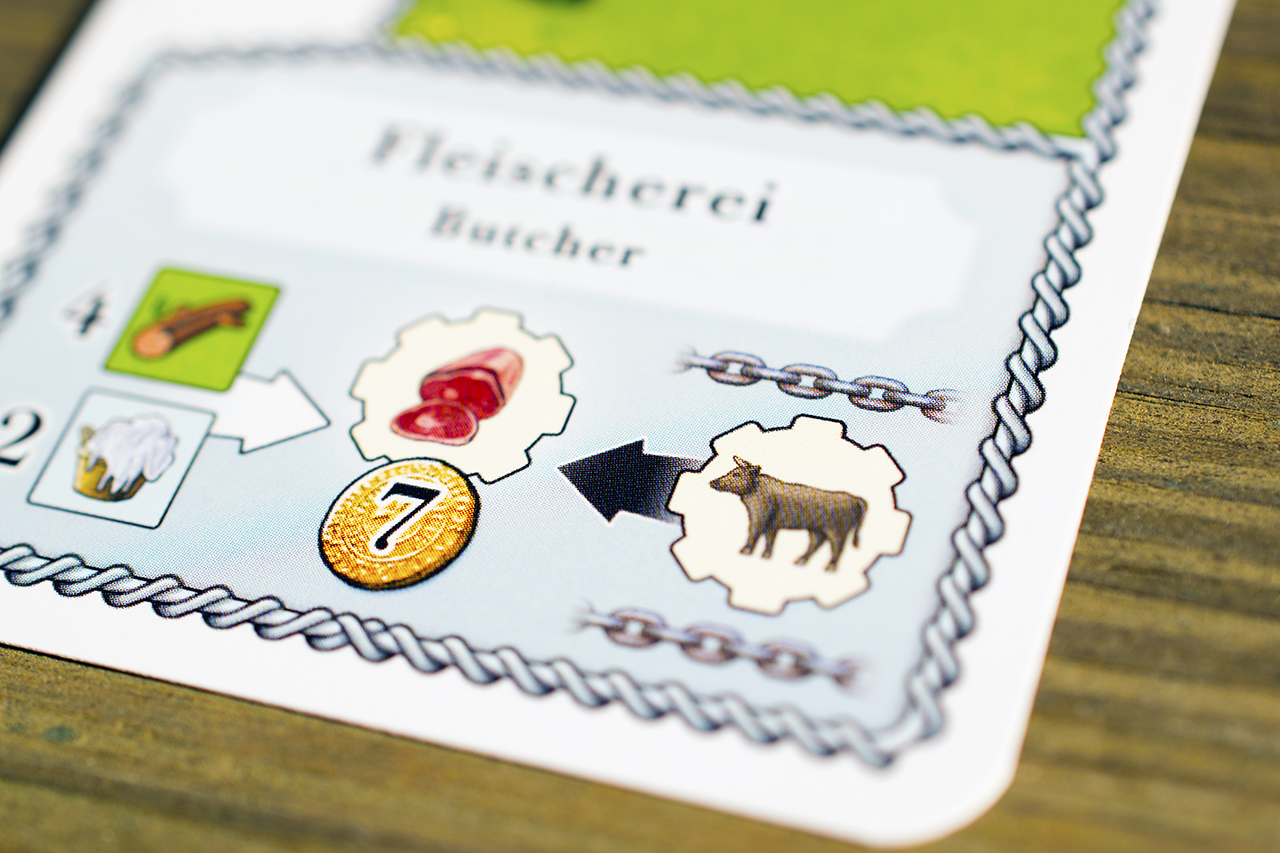
This praise is also where Oh My Goods! suffers, primarily because it’s not a big box euro-style game. It is rife with the randomness that many more intricate games in this genre look to eliminate. The game provides an experience much bigger than itself, but when that experience inevitably betrays you – by flipping a 12 card market consisting solely of wood… – it hits much harder as you’re sucked back to the reality of a small box multi-use card game.
Still, I find Oh My Goods! to be nothing short of a collection essential. Given its price and size weighted against the value of the gameplay experience, I can see no reason not to own a copy to have forever. It’s an unassuming card game that can easily displace a big box title during game night, and it provides the right mix of calculation and randomness to successfully appease a variety of players. Fully recognizing its faults, I still sing its praises and chuckle happily every time I say its ridiculous title when pitching the game to new players.
League Ruling
Kelly
Oh My Goods! is such a fantastic little card game. As a player not typically a fan of big, boring Euro games, I find that this game easily appeals to my inclination toward shorter and/or quicker paced games, while still providing the time, resource and hand management elements that can be found in a Euro game. I really appreciate the balance between the market and your hand in pushing to access the resources you need in optimal quantities. I will say that, while spending half of your hand so as not to waste a turn can be painful, it can also be beneficial if you do it well. Having recently played a game in which I was never dealt any wool cards but had half of my buildings requiring wool for production, I will say that the randomness of the market can be frustrating. I will follow that statement, though, to let you know that I only lost by 2 or 3 points, so it’s really not necessarily the end of your little manufacturing world. I think that this game can play a lot deeper than it I initially appears and initially highly recommend that anyone give it a shot. It’s got an excellent play time and it’s a wonderful opportunity to construct a brick-glass-coal-food-shirt-window-building machine.
Smee’s Two Pence and First Impression
Argh! I like this game, and yet I hate this game. It’s built exactly for me, with engine-building, resource production, and tiers of goods that chain off of each other, but nothing ever lines up properly! It’s like a well-oiled machine that slips a cog every revolution or two, and sometimes just collapses into itself when the market runs dry. I do enjoy what they’ve tried to do here, though, and at only $15, I certainly can’t complain about the finished product!
Steve
Oh My Goods! is this game fun! This game packs a big box euro experience into a deck of cards. You are always having such in internal struggle on deciding on whether to work orderly or sloppy. This decision really can change how the current round can go for you which can also turn some gamers off due to the randomness. To me, however, this element of press your luck is the best part of the game. Everyone I have introduced this game to has loved it. I think the multi-use cards are great but can be a little confusing to new and casual gamers. I am always willing to play this fantastic game.
Dan
While I hate the name Oh My Goods! I thoroughly enjoy the game itself. Mr. Pfister has combined a number of my favorite staple mechanisms – hand management, tableau building, press-your-luck – into a small deck of cards and created an experience akin to games twice its size.
My one complaint about the game is that I often feel as if I can’t accomplish everything that I want in the time given. A lot of this boils down to the randomness of the card draw and the press-your-luck fluctuations in the market – both downsides to contend with but understandable given the size and scope of the game. The combos I scheme in my head rarely come to fruition due to these factors. That said, when they do it is extremely gratifying and for that reason alone I continue to break this game out. For a big gaming experience in a small package, I highly recommend you check out Oh My Goods!

